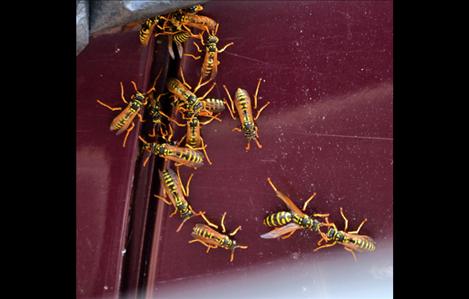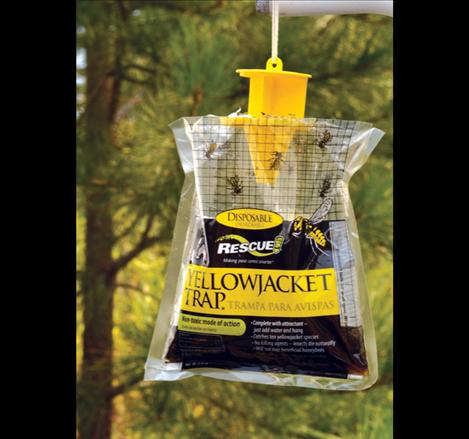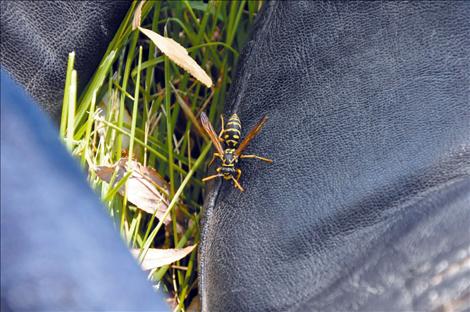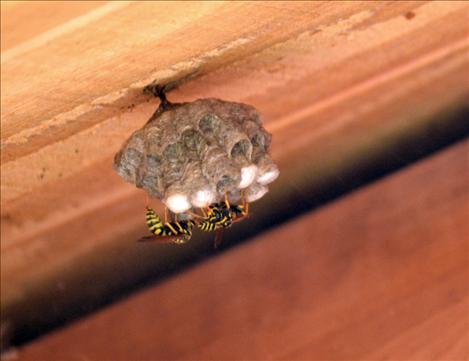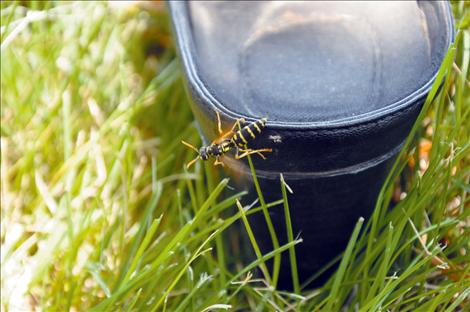Yellow jacket populations more aggressive this summer
Hey savvy news reader! Thanks for choosing local.
You are now reading
1 of 3 free articles.
LAKE COUNTY — Late summer conditions normally trigger aggression in bees, yellow jackets, and hornets, but drought has exacerbated food supply shortages for the insects and caused an unusual jump in local pesticide sales.
“Usually people come in and buy a bottle (of spray). This year they’ve come in to buy cases,” Hanson and Granley True Value clerk Rolan Becker said. “It’s been flying off the shelves.”
Becker said sales of top-selling pesticides were up 30 percent. Ace Hardware, Ronan, has seen sales of pesticides and traps double from last year, according to manager Dan Young.
“Most people buy the sprays,” Young said. “Catchers require a little more patience. People want immediate results.”
Young said demand for pesticides has been so high across the western United States, suppliers have had problems getting it to stores.
Jessica Anderson of Charlo said she has seen people come into Lowe’s Home Improvement store where she works and get inventive to deal with the shortages.
“We can’t keep the spray on the shelves so we have some people coming in to find stuff so they can concoct their own mixes to kill them,” Anderson said.
Sprays and traps aren’t always successful in keeping the insects away. Erika Smith of Charlo said her father has spent the summer spraying.
“Out in the country they are worse,” Smith said. “They are everywhere. My dad has sprayed so many times and he can’t get rid of them.”
Yellowjackets are the primary problem, MSU/Lake County extension agent Jack Stivers said. The insects can bite and sting, Stivers said. They build nests in unlikely places and are sometimes difficult to find.
“By the time summer ends and you find them they will have a huge nest in a weird spot,” Stivers said.
Yellowjackets are born in spring. Colonies grow throughout the summer.
“This time of year the population is largest, but the food supply is smaller. They get more aggressive as they try to protect the hive and what little food is left,” Stivers said.
Drier conditions result in even less food, which makes conditions for the hive worse. Yellow jackets spend the last weeks of their lives hungry and ornery until a winter freeze kills them.
The bugs have a strong sense of smell and will gravitate toward anything high in carbohydrates, like soda. This is why it is best to trap the bugs that are a problem near picnic tables or trash cans by placing traps away from the area where people and food are, Stivers said. Otherwise, the pests might keep trying to eat food and drink at the table, instead of being lured into the traps. The bugs carry meat back to their larvae, even though they themselves subsist on nectar.
Dave Ayers, head brewer and brewery manager at Glacier Brewery in Polson, said his business uses four cans of root beer set away from serving areas to help keep the bugs away.
“It distracted them,” Ayers said. “We’ve had a complete overabundance of wasps this year.”
St. Luke Community Hospital has not seen an increased number of sting cases this summer, according to community outreach coordinator Wayne Fuchs.















